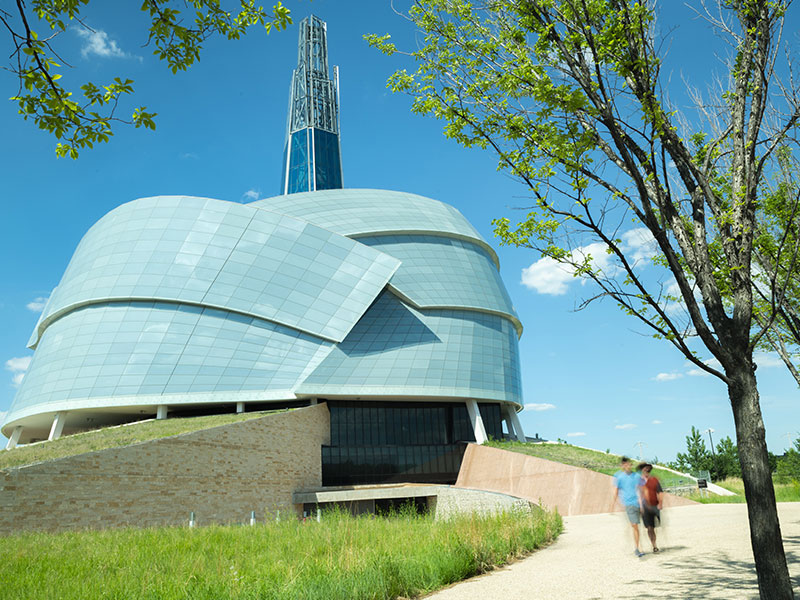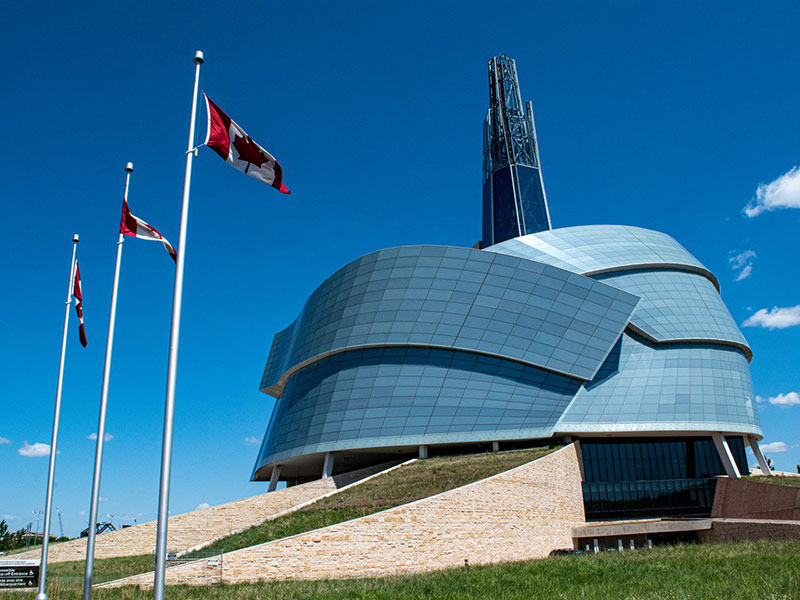
Canadian Museum for Human Rights
With its glass cloud façade that wraps around the building like the folded wings of a dove, its Tower of Hope spire reaching into the prairie sky above and the four massive limestone “roots” gripping the surrounding tall grass, there’s nothing like the Canadian Museum for Human Rights. Within architect Antoine Predock’s design, you’ll encounter labyrinth-like ramps composed of alabaster that glow courtesy of LED lights embedded into the stone. These ramps connect the galleries and look like an Escher drawing from above, with the whole museum ascending from darkness to light (the building itself acting as a metaphor for civilization’s journey toward universal human rights) as you make your way to the summit.
Visit Website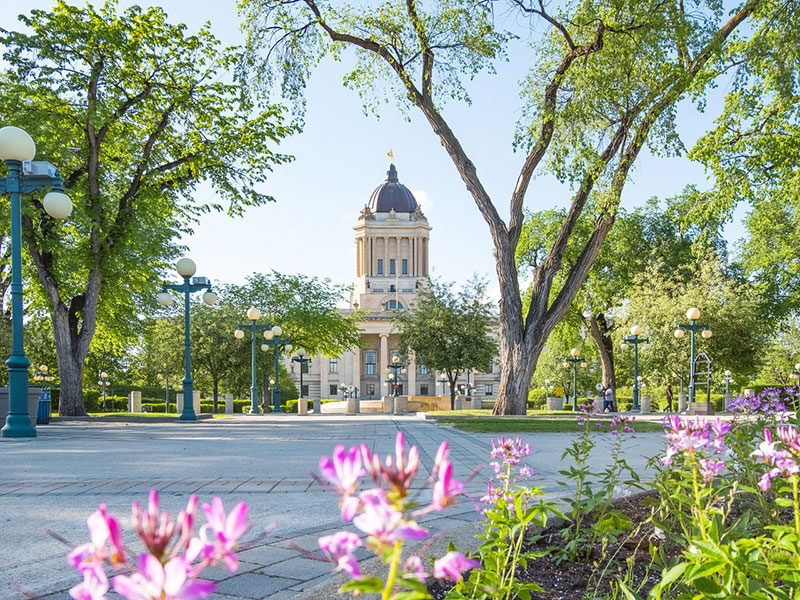
Manitoba Legislative Building
At a glance, the Manitoba Legislative Building may seem like a standard, stately neoclassical building. Upon further inspection, you’ll see there’s so much more than meets the eye. Its façade is covered with sphinxes, Egyptian hieroglyphics and the Greek pantheon, with Hermes looking North from the building’s apex. Within, you’ll encounter gorgons, giant bisons, paintings with hidden Freemason symbols and The Pool of the Black Star–the building’s acoustic focal point that will astound your ears should you sing or speak when standing on it. The number of stairs and lights within the building all representing something too, with every facet of its architecture adding up to create a Hermetic Temple that was hidden in plain sight for nearly a century. You can tour the building for free during visiting hours, while a Hermetic Code Tour of it with Heartland Travel is a must for anyone with a sense of intrigue.
Visit Website
Esplanade Riel
The most recognizable element of the Winnipeg skyline is all about connectivity. The Esplanade Riel spans the Red River, bridging downtown and The Forks to Saint-Boniface, providing 250-meters of pedestrian-only space to cross the waters. Designed by famed Winnipeg architect Étienne Gaboury and Guy Préfontaine, the bridge contains imprinted patterns that represent the history and culture of the region. Its side-spar cable-stayed design comes together 57 metres (187 ft) above the bridge deck at its spire, creating a mesmerizing, symmetrical, cable-framed view that photographers simply can’t pass up.
Visit Website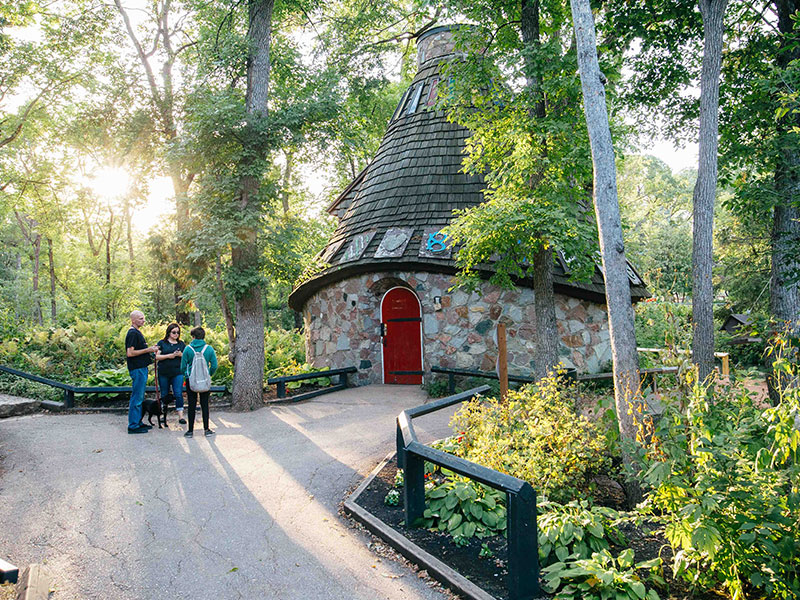
Kildonan Park
One of the city’s most picturesque parks, Kildonan Park is brimming with enchanting areas and ample greenspace. Its Witch’s Hut—located near the centre of the park—invites you to step into the world of The Brothers Grimm, while throughout the park charming foot bridges run over numerous little streams. The park is home to Rainbow Stage, a gorgeous open-air theatre with an iconic design that includes yellow chairs and a domed roof, along with the Peguis Pavilion, which overlooks the duck pond with its cool lights called Bokeh by local artist Takashi Iwasaki and Nadi Design.
Visit Website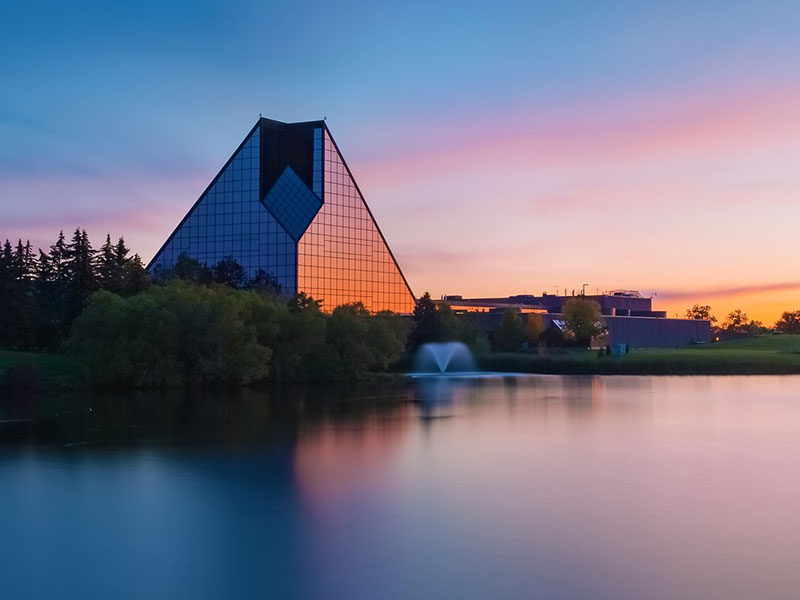
Royal Canadian Mint
Another Étienne Gaboury-designed building, Winnipeg’s Royal Canadian Mint produces every single Canadian circulation coin, along with millions of coins for countries around the world. Its all-glass façade shimmers on the prairie as you first enter the east end of the city, while at sunset the building glows bronze, creating a copper tone reflective of coins that are produced within. It’s pyramid-like design always catches your eye—even when it stands in for the evil pharmaceutical headquarters in the Fernando Meirelles thriller, The Constant Gardener. Inside you can take a tour (that’s worth every penny! har har) to see how the state-of-the-art machinery produces coinage that is used across the globe. The gift shop also contains all manner of collector coins and such.
Visit Website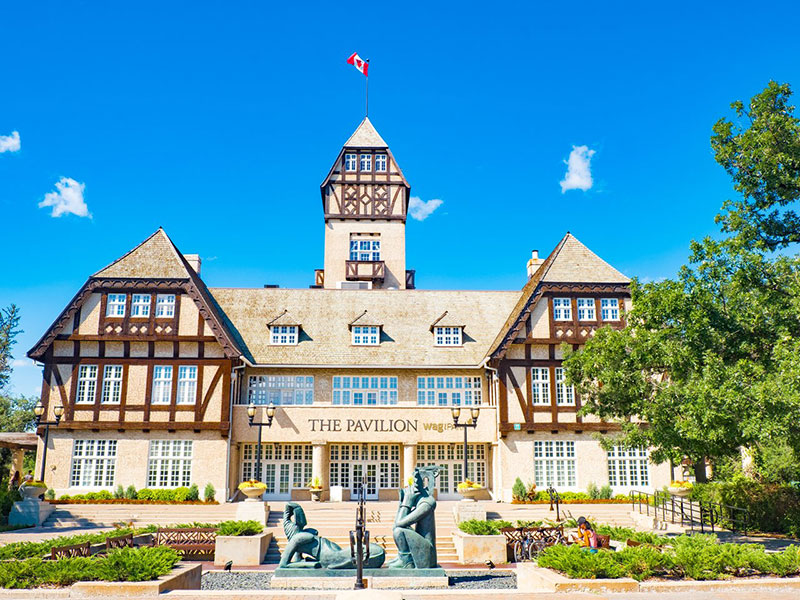
Assiniboine Park
The city’s largest park is chock-full of landmarks and attractions, so give yourself ample time when visiting. In summer, it is home to the outdoor Lyric Theatre—a venue for free concerts from the likes of the Winnipeg Symphony Orchestra, Canada’s Royal Winnipeg Ballet and local groups—along with some of the most beautiful gardens you’ve ever seen. Year-round, its Qualico Family Centre (itself an architectural gem built into the forested landscape) provides breakfast through lunch from The Park Café, including a takeout window that skaters on the frozen Riley Family Duck Pond relish, while the charming Tudor-style Pavilion houses an art gallery and event spaces. The Park’s Leo Mol Sculpture Garden contains hundreds of bronze creations from the master artist, the cricket field is often in use from local teams, and everywhere you look there’s a spot to sit and savour the sunshine. Coming soon (fall 2022) will be the unveiling of The Leaf, a massive horticultural exhibit featuring numerous biomes, Canada’s largest indoor waterfall and a butterfly garden.
Visit Website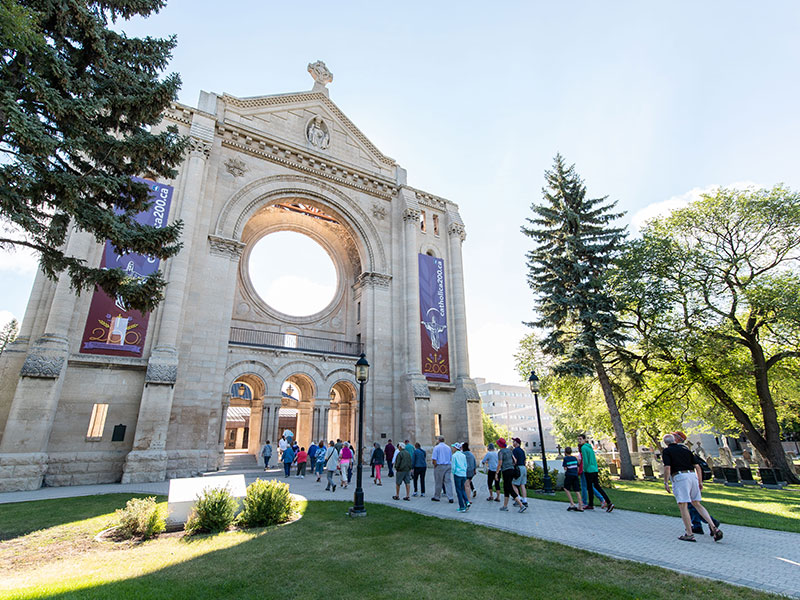
St. Boniface Cathedral Basilica
This stunning setting is a heavenly mix of old and new. Its west-facing limestone façade, along with the north and south walls, are the only remaining portion of the original 1906 version of the structure. The rest of the cathedral was lost in a massive fire in 1968, which blew out the huge, round ornate window (which is now an iconic oculus) above the three arches that now serve as an entranceway to its courtyard. Beyond the courtyard is the new church that was designed by Étienne Gaboury (yes, same guy!) and Denis Lussier, which reopened in 1972. Within, you’ll find a striking mix of wood and stone, along with some marvelous stained glass. The Cathedral does a unique job of celebrating the region’s Métis history, with motifs that include a statue of Mary sporting a Métis sash.
Visit Website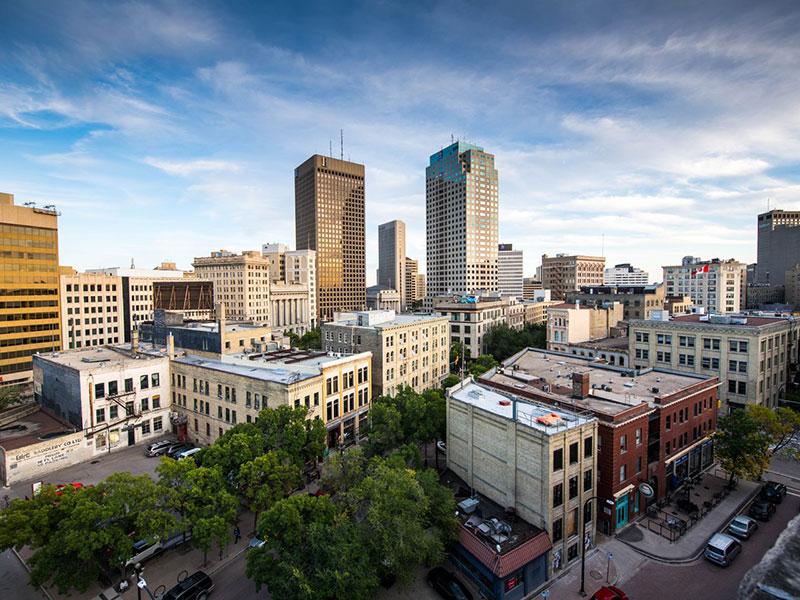
Exchange District
Due to its vast collection of turn-of-the-20th century buildings, this whole area of the city is a designated National Historic Site. While walking its 20+ blocks you’ll see handsome brick warehouses, “terra cotta skyscrapers” adorned with gargoyles, lions, and other fanciful features and a number of neoclassical bank buildings that marked Winnipeg’s boom years, when the city was referred to as “The Chicago of the North.” Today, this area often stands in for both Chicago and New York when Hollywood productions are being filmed here, while these historic buildings are now home to trendy coffee shops, galleries, restaurants, design firms and locally- owned retail shops.
Visit Website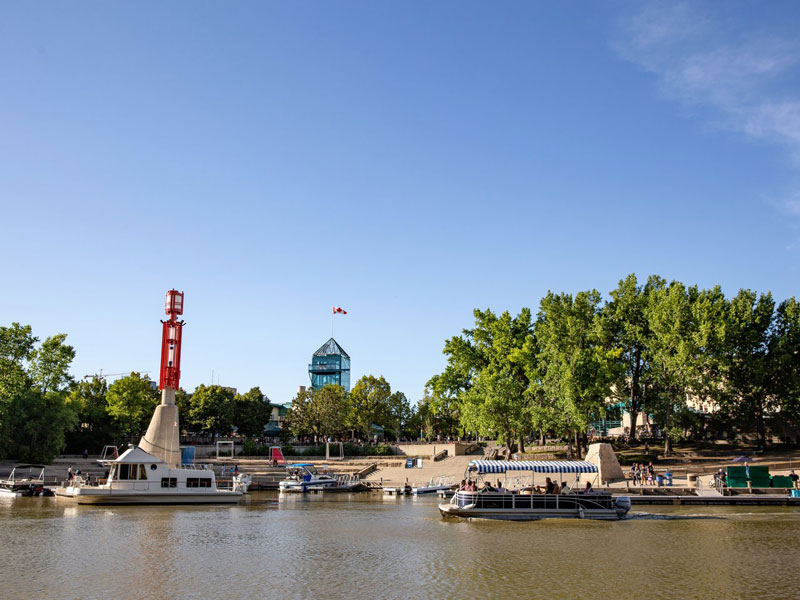
The Forks
For over 6,000 years the spot where the Red and Assiniboine Rivers intersect has served as a meeting place in the area. Today, it’s Manitoba’s most-visited destination, a place that continues to get more amazing year after year. The Forks Market now houses an incredible array of food kiosks that complement The Common, a bar (located both inside and outside) that offers a fine selection of craft beer and interesting wines. Throughout The Forks grounds, you’ll find several beautiful trails that sit alongside the rivers, along with The Forks Harbour, from whence you can go on riverboat tours in the summer and skating excursions on the frozen rivers in the winter. Niizhoziibean, the area formerly known as South Point, now pays homage to the area’s Indigenous heritage via striking works of art, a wigwam and gathering place and signage in Cree, Ojibway and Michif.
Visit Website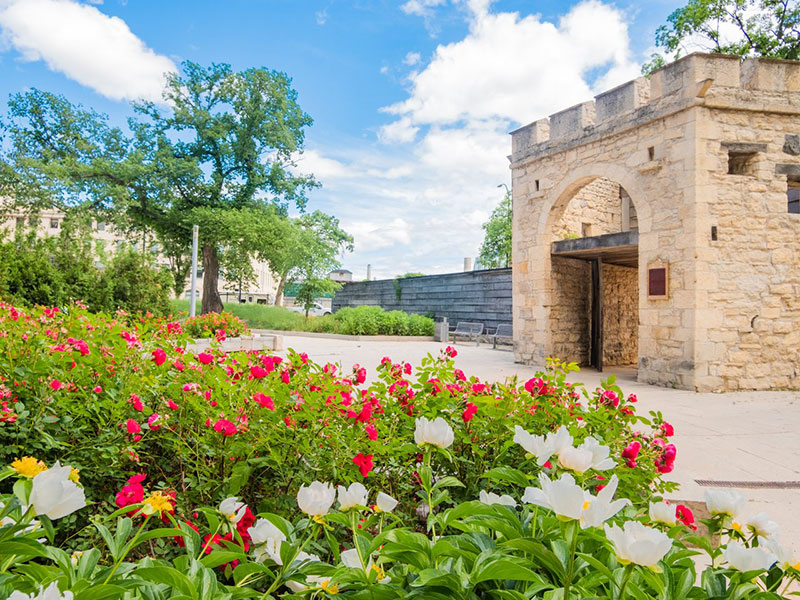
Upper Fort Garry Gate Provincial Heritage Park
One of Winnipeg's newest attractions is located on its oldest site. Upper Fort Garry’s circa-1850s stone gate (“the Governor’s Gate”) is Winnipeg's oldest still-standing structure. It beckons you to enter this provincial park which features an immense interpretive wall that is Canada’s largest free-standing public art installation. The Manitoba Liquor & Lotteries Heritage Wall is 440 feet long, featuring weathering steel that depicts the history of the region—from Indigenous, Metis and fur trading motifs, to the Red River Colony’s entry to Canada, to the present day and the development of the north. The wall also features daily sound and light shows that depict a Metis bison hunt, while an interactive app (available as a free download) teaches about the history of the region in creative and interesting ways.
Visit Website